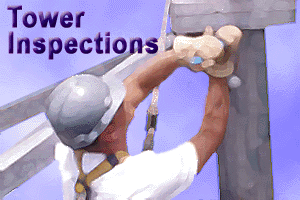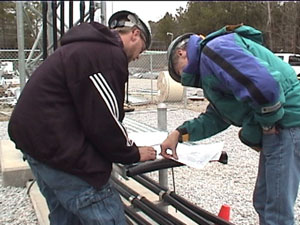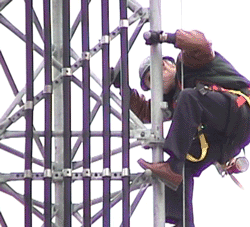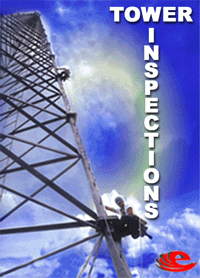
Service Information
Inspections
As the industry matures, tower owners are embracing the need to perform inspections with a greater degree of frequency as their assets age so that minor maintenance issues don’t turn into capital expenditure headaches. Inspections are also required after a raw land build, retrofitting project or colocation to identify that the contractor has completed the work according to the project specifications and industry standards. Towers also need to be carefully assessed prior to their purchase.
 Although TIA/EIA 222F has a suggested inspection checklist and some inspection contractors have extensive inventories of additional items that they will review, many tower firms have developed their own standard to provide continuity throughout their portfolio. As a cost efficient procedure, oftentimes the inspection contractor will be required to provide minor maintenance services as they are observed. Although TIA/EIA 222F has a suggested inspection checklist and some inspection contractors have extensive inventories of additional items that they will review, many tower firms have developed their own standard to provide continuity throughout their portfolio. As a cost efficient procedure, oftentimes the inspection contractor will be required to provide minor maintenance services as they are observed.
To be compliant with OSHA standards, a second employee must be on site at all times whenever elevated inspections are being performed.
Whereas an inspection form with accompanying digital photographs used to be the industry standard, clients are becoming more exacting in how the data is to be presented. Some tower owners will request the tower to be mapped (see tower mapping ) while the inspection team is on site. Through years of construction experience, a qualified inspector should be able to identify structural and RF problems that may not be a checklist item. and RF problems that may not be a checklist item.
Some inspections will require the contractor to provide the installed foundation sizes because construction documents are not available. Dispersive wave testing is a new technology for identifying the depth and structural integrity of tower foundations and allows you to obtain reliable dimensions without having to disturb load bearing soils.
If you are required to identify the wall thickness of a tubular leg it is recommended to use ultrasound non-destructive testing.
How often should the tower be inspected?
 As detailed in TIA/EIA 222-F, maintenance and inspection of steel antenna towers and antenna supporting structures should be performed by the owner on a routine base, however, “routine” is open to interpretation. They recommend that all structures should be inspected after severe wind and/or ice storms or other extreme loading conditions. Shorter inspection intervals should be considered for structures in coastal salt water environments, in corrosive atmospheres, and in areas subject to frequent vandalism, according to the standard. As detailed in TIA/EIA 222-F, maintenance and inspection of steel antenna towers and antenna supporting structures should be performed by the owner on a routine base, however, “routine” is open to interpretation. They recommend that all structures should be inspected after severe wind and/or ice storms or other extreme loading conditions. Shorter inspection intervals should be considered for structures in coastal salt water environments, in corrosive atmospheres, and in areas subject to frequent vandalism, according to the standard.
The document is more specific on suggesting a time for major inspections: 3 years for guyed towers and every 5 years for self supporting structures.
 Pricing for inspection services is based upon the client’s specifications, the number of towers to be inspected or mapped and the site’s location. Identify the number of hours, including travel time that the project will take and multiply it by an average charge of $65.00 to $80.00 per hour. If it’s a guy tower that requires inspection, identify if you are required to just provide the existing tensions for the guy wires or if it’s necessary to plumb and tension it. Add any administrative time required at a lower rate of compensation. Pricing for inspection services is based upon the client’s specifications, the number of towers to be inspected or mapped and the site’s location. Identify the number of hours, including travel time that the project will take and multiply it by an average charge of $65.00 to $80.00 per hour. If it’s a guy tower that requires inspection, identify if you are required to just provide the existing tensions for the guy wires or if it’s necessary to plumb and tension it. Add any administrative time required at a lower rate of compensation.
We recommend that you contact our valued professional inspection contractors to obtain additional information about their services, capabilities and experience.
|